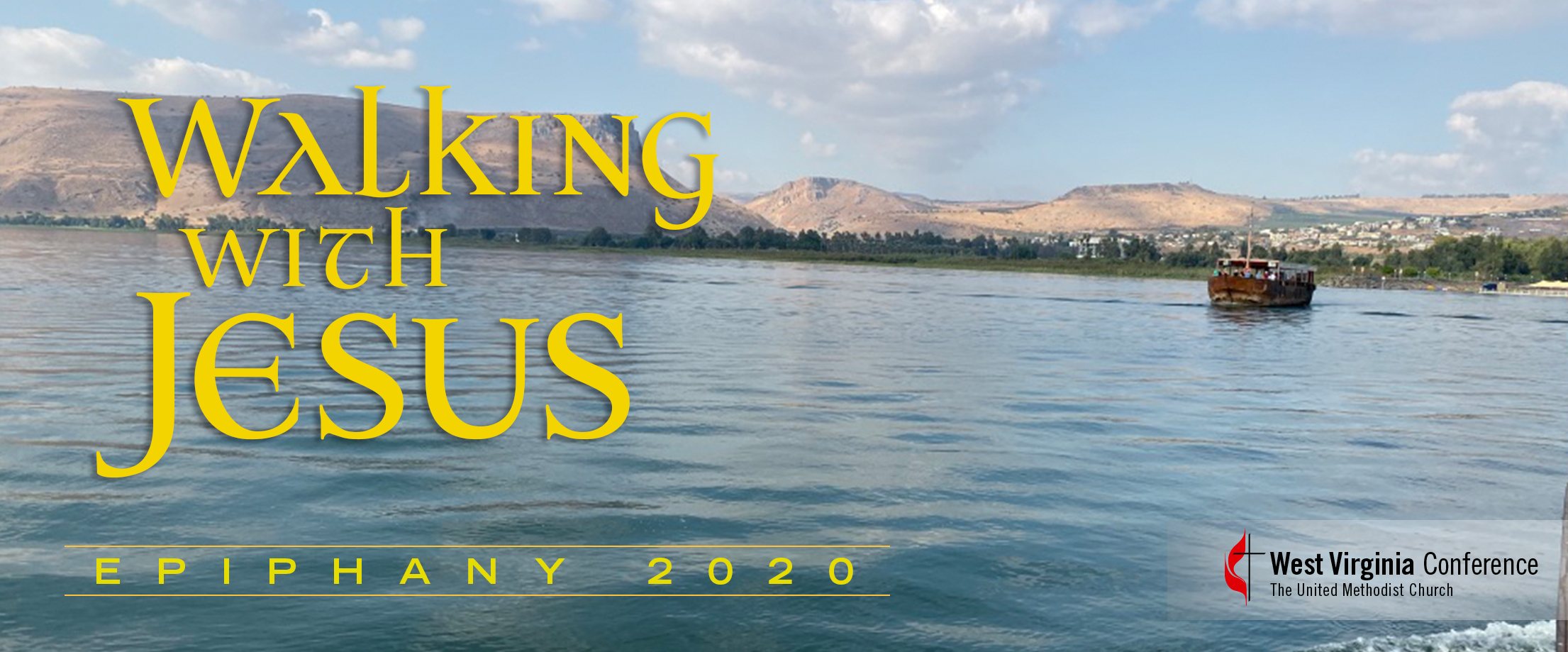
It is in the season of Epiphany that Jesus is made known in many exciting ways! This is when our Walk with Jesus becomes a journey of light, hope and on occasion one of taking risks for the Kingdom of God.
The scripture lessons for the Second Sunday of Epiphany are: John 1:29-42, Isaiah 49:1-7, Psalm 40:1-11, 1 Corinthians 1:1-9.
Suzanne Quinn
Laity
Dallas UMC
Northern District
“As we drive from Galilee through Samaria, you will be able to see the lush green valley on our left.” our guide, Jimmy, a Jordanian Christian born in Jerusalem, said. All I could see was the barren desert hillside with barely a bush or grass for the sheep and goats we occasionally saw grazing.
I thought of the mown fields surrounded by autumn hard wood forests at home in West Virginia and scoffed at the idea of a “lush valley.” And yet this Samaritan valley awoke within me a more spiritual feeling than all the churches or monuments built long after Jesus had walked this earth that we were seeing in our travels.
Here I could actually see land where our Lord’s sandals had touched this ground, not land which had had civilizations built upon it in the past two thousand years, for we were traveling the most direct route between the Sea of Galilee and Jacob’s Well. The road we were on was a paved iteration of the route Jesus and his disciples would have trod soon after John had baptized Jesus, and Jesus had called his disciples to “Follow me.”
Not much had changed in two thousand years. The small enclaves of shepherds and their families still appeared periodically.
True, now old rusty cars and small trucks were parked in the enclosures where once there may have been carts or more donkeys, but even now in 2019, one could sense that this long valley was inhabited by people who were outcasts from the more prosperous areas of the Holy Land. People eking a living by raising livestock in an arid valley. The children we saw were not like the children at home, coddled by parents taking them to sports practice after school wearing clothes with prominent sports logos.
Instead they were kids wearing mismatched apparel kicking a soccer ball in a loosely organized game in a small dusty space or they were tending the animals in the makeshift corrals. The “villages” were sparsely populated collections of tin roofed and sometimes tin sided sheds. The villagers were used to luxury busloads of tourists staring at them.
On the right side of the road, Jimmy pointed out an “abundant waterfall” feeding into the water below to create the lush valley. We were descending into the rolling more flat landscape toward Judea. At last I saw the green trees and little bit of grass which lined the valley floor and provided life-giving water to this area. At last I could see the reason for our journey; not to see monuments or churches interpreting events in Jesus’ life that were “If not here, near,” but rather to follow Jesus from his birth in Bethlehem to his youth in Nazareth, his baptism in the Jordan, his ministry and miracles in this Holy Land and finally his crucifixion in Jerusalem.
This pilgrimage was renewing my spiritual journey with an awaking of insights into my faith, why I believe and why I want to follow in the footsteps of Jesus, not to build or maintain church buildings, but to build communities of believers emulating the teachings of Jesus. I saw more clearly how the ministry of our Lord could touch everyone from the people who dwelt in this “lush valley” to my neighbors at home to the other pilgrims on this coach. I experienced a reawakening, an Epiphany.